A new open-access publication highlights the influence of thyroid hormones on the early life stage and settlement of clownfish larvae.
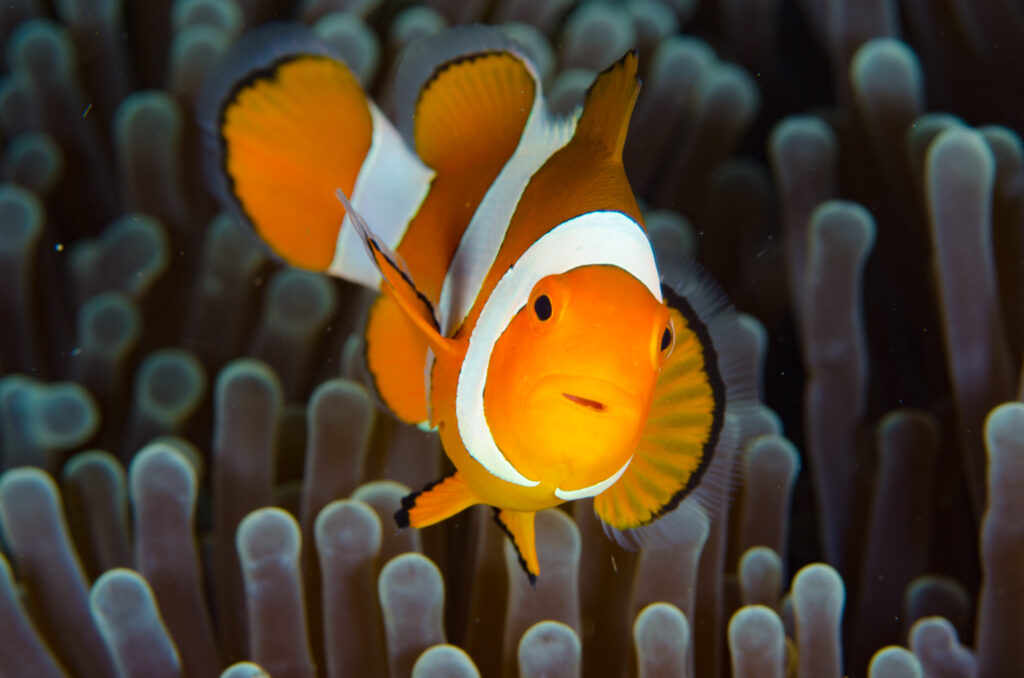
The article, “The multi-level regulation of clownfish metamorphosis by thyroid hormones”, was published in the journal Cell Reports. A comprehensive author list includes: Natacha Roux, Saori Miura, Mélanie Dussenne, Yuki Tara, Shu-hua Lee, Simon de Bernard, Mathieu Reynaud, Pauline Salis, Agneesh, Barua, Abdelhay Boulahtouf, Patrick Balaguer, Karine Gauthier, David Lecchini, Yann Gibert, Laurence Besseau, and Vincent Laudet. You can read the paper now at https://doi.org/10.1016/j.celrep.2023.112661
The challenges faced by these tiny clownfish are impressive; they must combine energy production from highly erratic food resources, mobilize their reserves in case of fasting, and, at the same time, mature sensory systems that can detect the future juvenile habitat—all of this while avoiding predators!
Challenging Metamorphosis:
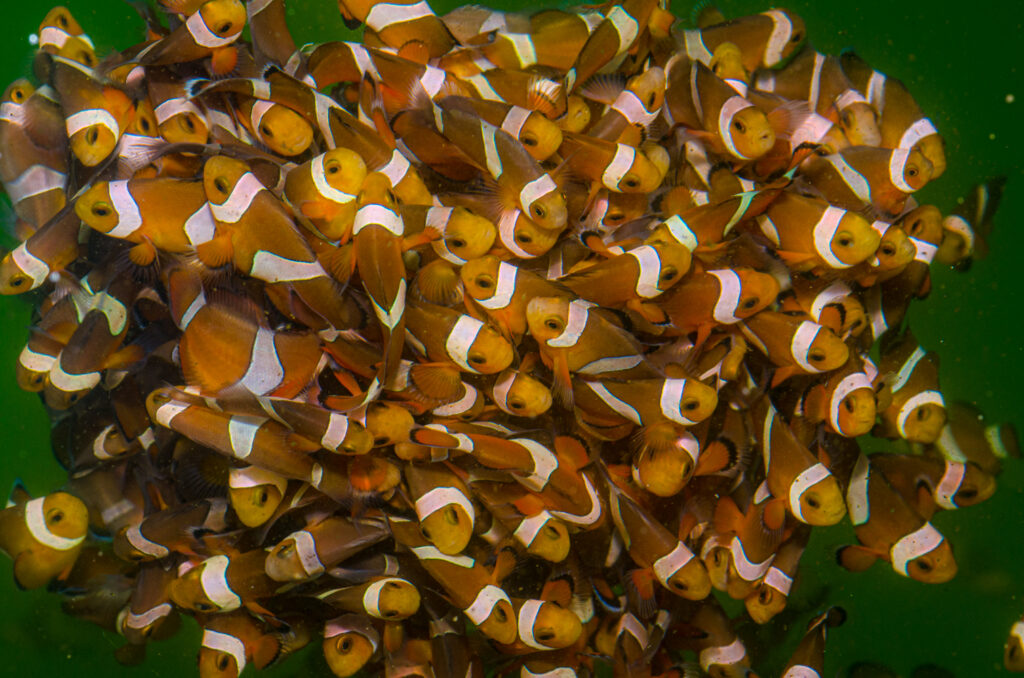
The metamorphosis of fish larvae into adult form is quite a powerful metabolic change. The hormonal drivers behind this spectacular change were poorly known, although the massive role of the thyroid in this kind of transformation was already well-known in vertebrates. Thyroid hormones not only trigger but also coordinate the transformation of the larval clownfish into a juvenile at the tissue and cellular levels.
A fundamental transformation:
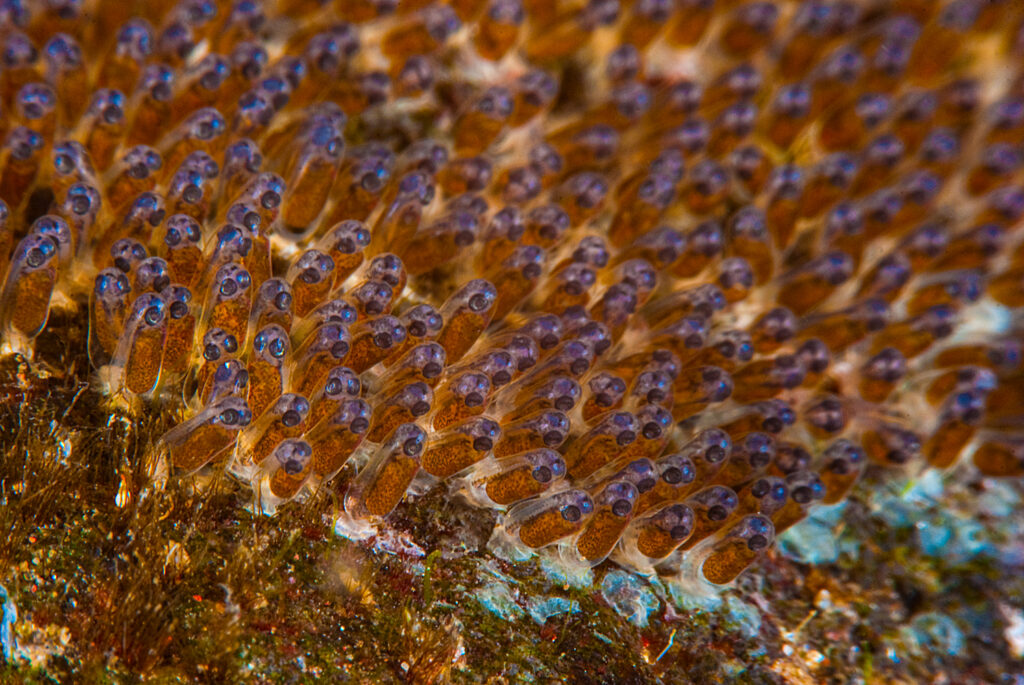
In Amphiprion ocellaris, every 2–3 weeks, approximately 500 eggs are laid on a substrate near the host. Newly hatched larvae disperse in the ocean for 10–15 days. At the end of this pelagic phase, larvae metamorphose into juveniles, called recruits, who must locate a reef and actively look for a sea anemone using their sensory abilities, combining visual, chemical, and acoustic cues. During metamorphosis, larvae lose their larval characteristics (light pigmentation, elongated body shape) and transform into miniature adults with an ovoid body shape and a pigmentation pattern displaying white bars on a bright orange background. These pigmentation changes have been shown to be regulated by thyroid hormones.
A Metabolic Transformation:
This study showed that thyroid hormones triggered a wide range of changes, such as white bar appearance, bone mineralization, digestion, shift in color vision, as well as a major metabolic shift in energy production.
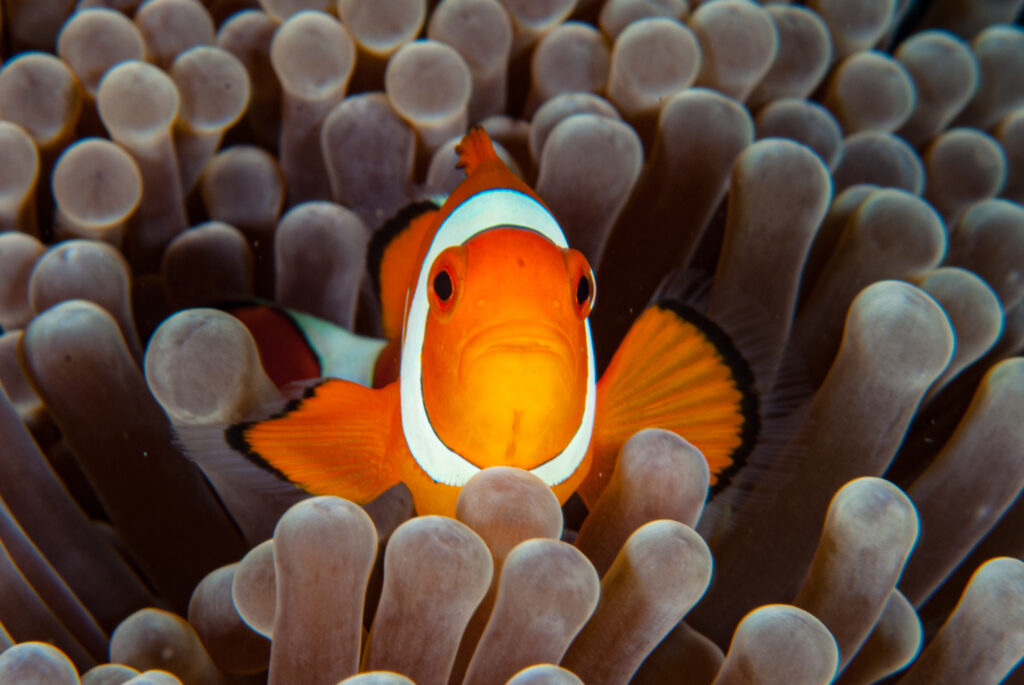
It was observed that thyroid hormones triggered a shift between short and long-wavelength vision gene expression during clownfish metamorphosis. Interestingly, this shift occurs concomitant with a behavioral change; namely, a change in color preference. Larval fish prefer a blue background, in accordance with their natural pelagic environment, whereas juveniles prefer an orange background in accordance with the shallow, chromatically dynamic environment of the reef.
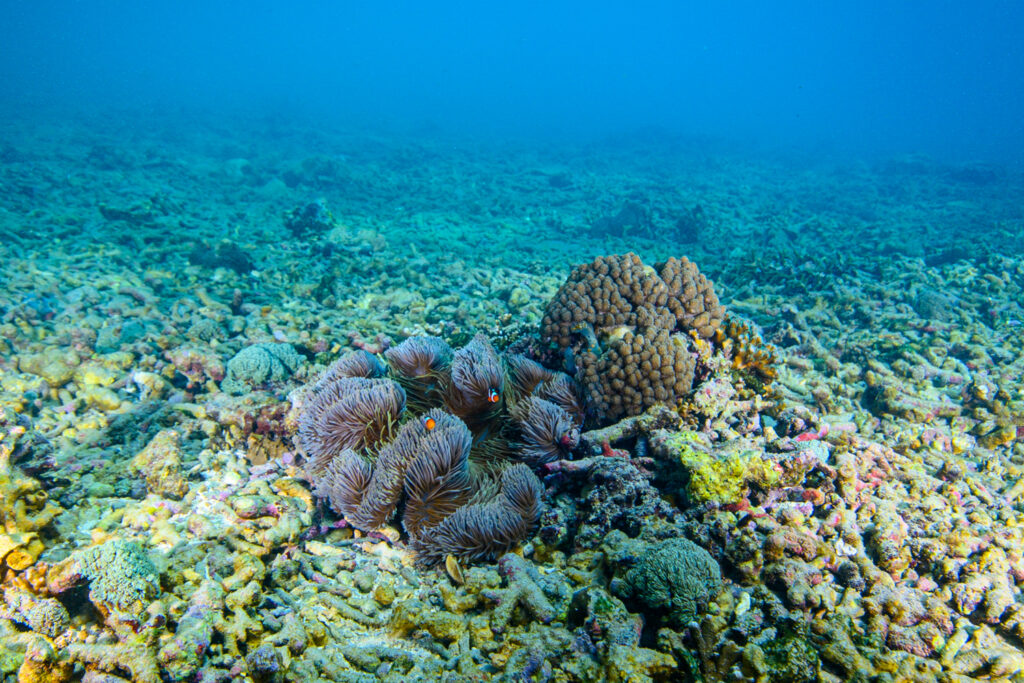
When larvae experience higher thyroid hormone levels, it was also observed that the swimming behavior changed from the pelagic, constant swimming behavior, to a low swimming activity, close to the bottom, characteristic of a benthic lifestyle,
Moving from the pelagic lifestyle, where clownfish larvae consume a large amount of saturated and highly unsaturated fatty acids, the nutritional profile changes once they settle on the reef. There, in their demersal lifestyle, they consume mainly on mono- and polyunsaturated fatty acids. Larvae preferentially use sugars and fermentation to produce energy, whereas they rely more on fatty acids during metamorphosis.
The life cycle and hormonal process are fascinating mechanisms, and many of them still need to be discovered.




